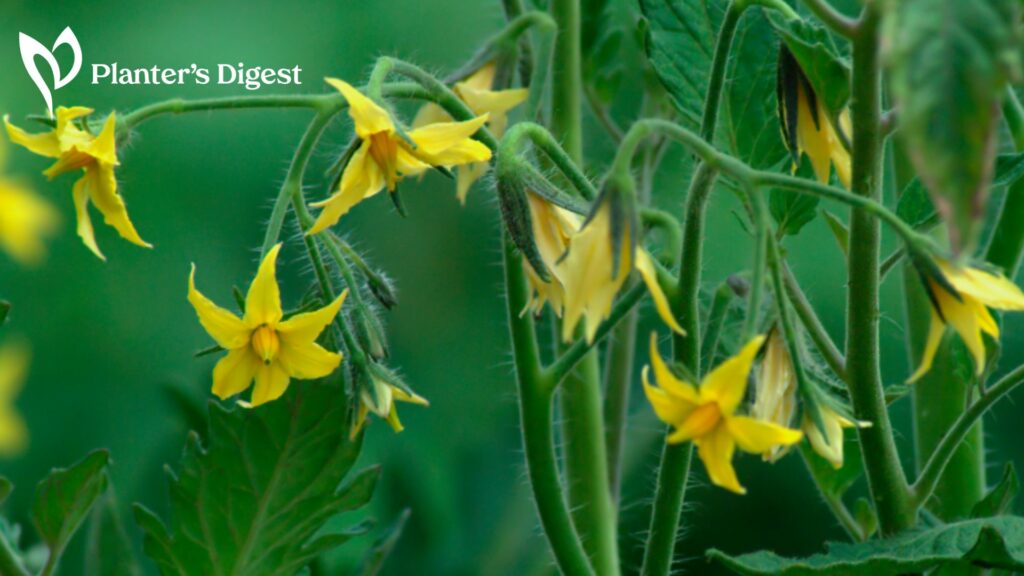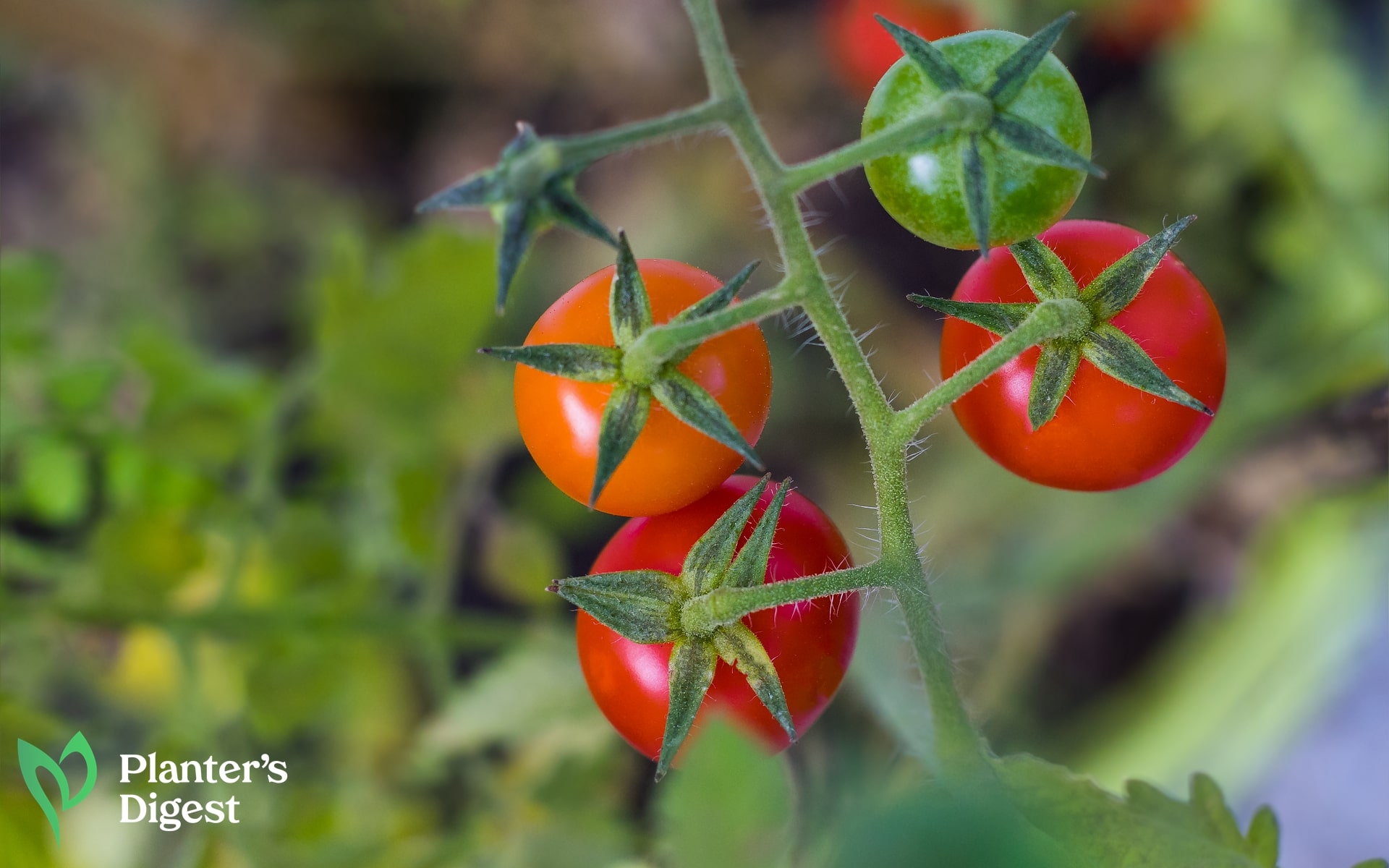
Cherry tomatoes have become a garden favorite because of their ability to produce hundreds of plump, juicy tomatoes even in small containers. But sometimes, these prolific growers must be controlled to enjoy a more abundant and ripe harvest.
In this article, we’ll guide you on how to prune your cherry tomato to make sure you get the best harvest possible. Let’s get started!
Do cherry tomatoes need pruning?
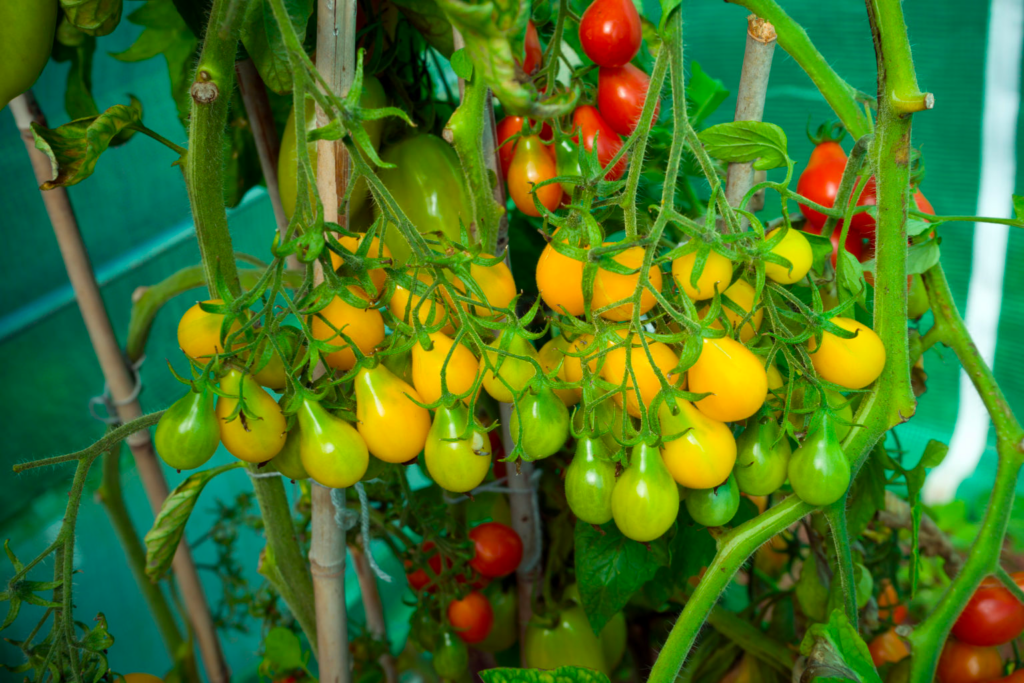
Cherry tomato plants, especially indeterminate varieties, require pruning. When left untouched, the increased foliage traps moisture and prevents airflow, resulting in stunted fruit production and a breeding ground for plant diseases.
When cherry tomato plants are pruned properly, they become more manageable, and you’ll see signs of tomato plant diseases earlier.
Once leaves touch moist soil, they become a pathway into infecting the cherry tomato plant, and we want to prevent that before it’s too late.
Pruning also helps improve airflow within the cherry tomato plant. When the plant, especially the lower leaves, is kept dry, the development of fungal spores is prevented, and the cherry tomato plant remains protected from diseases.
Cherry tomato plants can grow very tall and break when they cannot support their own weight. If not pruned and left to the ground, the fruits will likely rot, and the whole plant will catch several soil-borne diseases.
With fewer leaves blocking cherry tomatoes, they’ll also get exposed to more sunlight which will help them ripen quicker and develop sugars to taste better.
When should you prune cherry tomatoes?
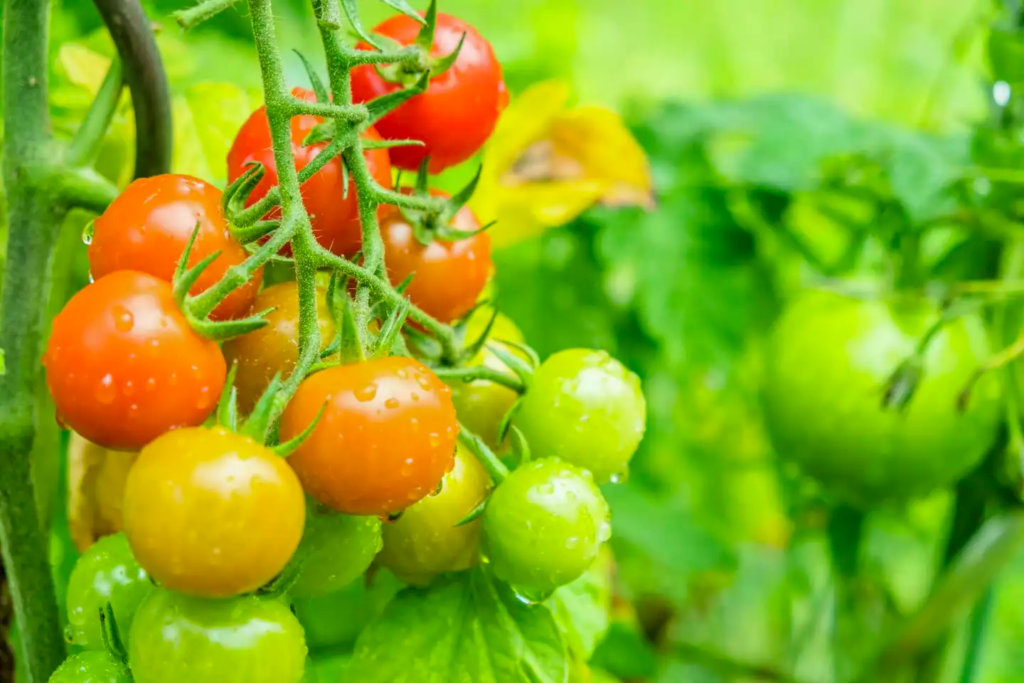
Generally, cherry tomato plants must be pruned every 2 to 3 weeks to maintain their shape and increase fruit productivity during their growing season. Begin pruning your plant when the first flower appears, usually in early summer.
Regular pruning will help prevent the spread of tomato plant diseases and allow the plant to focus its energy on producing juicy red cherry tomatoes. You should aim to remove no more than 25% of the plant leaves, stems, or suckers at a time.
How to Prune Cherry Tomato Plants

| Difficulty | Easy ●○○○○ |
| Duration | 1 to 2 hours |
| Things You Need | • Pruning shears • Rubbing alcohol |
Cherry tomato plants are pruned to prevent them from growing into a bushy mess, jeopardizing fruit production and yield.
Here’s a step-by-step guide on how to prune cherry tomato plants for optimal growth.
| How To Do 1. Start pruning your cherry tomato plant when they grow around 6 to 8 inches tall. 2. Look for tomato suckers or the small shoots emerging between the main stem and the branches. 3. Pinch off the suckers using your fingers or cut them off using the pruning shears. 4. Remove dead or yellowing leaves, fruits and branches using your pruning shears. |
How to Prune Cherry Tomato Seedlings
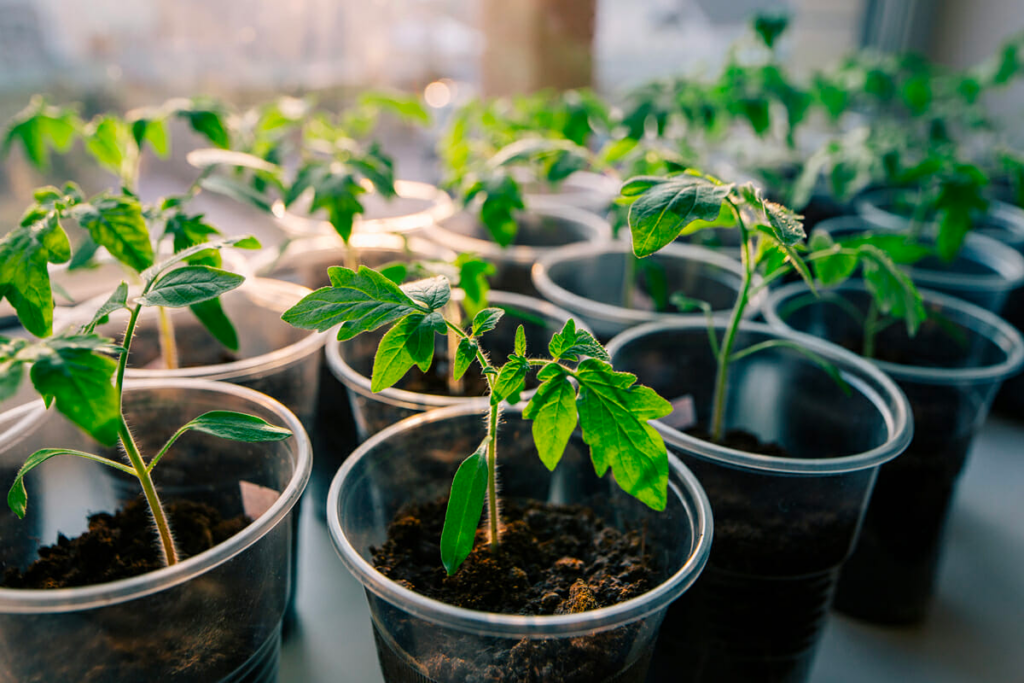
When the cherry tomato plant is less than a foot tall, you can already start pruning to remove leaves and to remove tomato suckers. Here’s how.
| Difficulty | Easy ●○○○○ |
| Duration | 1 to 2 hours |
| Things You Need | • Pruning shears • Rubbing alcohol |
| How To Do 1. Plant the seedling deep and let the stem develop new roots. 2. Remove all the leaves at the base of the seedling and those touching the ground. Press the bottom of the leaf stem using your thumb to cleanly remove each leaf. 3. Remove flowers to allow the cherry tomato plant to focus its energy on growing. |
How to Prune Cherry Tomatoes Once They Set Fruit

| Difficulty | Easy ●○○○○ |
| Duration | 1 to 2 hours |
| Things You Need | • Pruning shears • Rubbing alcohol |
Cherry tomato plants also need pruning once the first cluster of fruits begins to ripen. Your goal is to keep a long, bald stem so that there will be ample airflow on the plant and its energy is directed into fruit production.
Prune your cherry tomato plant once or twice a week to stimulate growth. You’ll soon start seeing cherry tomatoes ripening from the bottom and going up.
Below are steps on how to prune cherry tomatoes once they set fruit.
| How To Do 1. Remove leaves below the fruit cluster and diseased leaves. 2. Do not remove leaves on top of the fruit cluster to prevent the sun scalding the tomatoes. |
How to Prune Cherry Tomatoes in the Summer

| Difficulty | Easy ●○○○○ |
| Duration | 1 to 2 hours |
| Things You Need | • Pruning shears • Rubbing alcohol |
During summer, cherry tomato flowers begin to open their buds. This is the sign that you can start pruning the tomato plant.
Generally, the bottom 6 to 12 inches of leaves are removed to prevent soil-borne diseases.
Pruning cherry tomato plants during summer also keeps your plant at a manageable size and allows it to produce bigger fruits during the growing season.
Below are steps on how to prune cherry tomatoes in the summer.
| How To Do 1. Look for the lowest flower of the cherry tomato plant and mark the first tomato sucker below it. This sucker must be left in place so it can develop a second stem. 2. Remove all other tomato suckers in the plant by pinching them off or using sterilized pruning shears. 3. Prune every 10 to 14 days but do not remove the leaves above the fruits to protect them from sunscald. |
How to Prune Cherry Tomatoes in the Fall
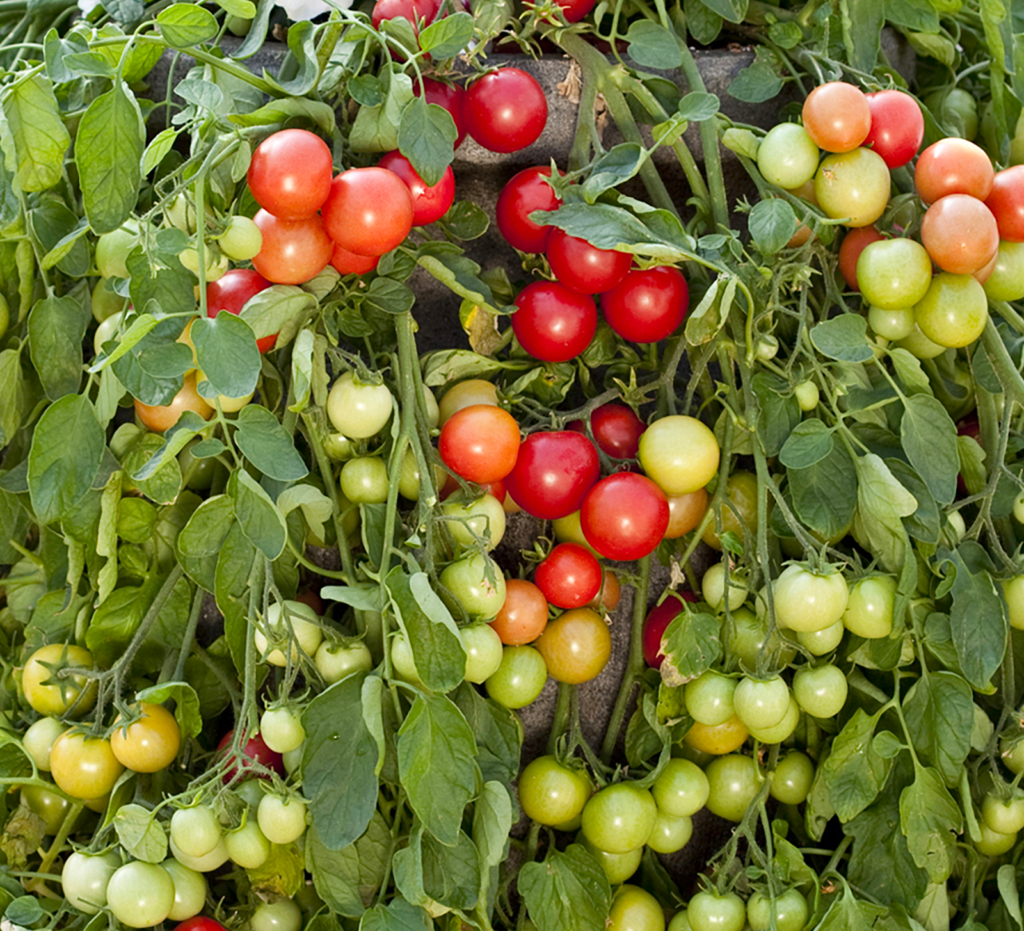
| Difficulty | Easy ●○○○○ |
| Duration | 1 to 2 hours |
| Things You Need | • Pruning shears • Rubbing alcohol |
While determinate tomatoes ripen all at once, indeterminate varieties continue to flower until the fall season.
So, fall pruning is recommended to stop the cherry tomato plant from flowering and speed up the ripening of cherry tomatoes in time for the harvest season. Here’s how!
| How To Do 1. Cut the tip of every main stem of the cherry tomato plant. Do this four weeks before the first frost. 2. Harvest the last batch of cherry tomatoes for the growing season. |
Mistakes to Avoid in Cherry Tomato Pruning
Pruning cherry tomato plants is the easiest way to promote optimal growth and high-quality fruit production.
But you can never be too careful in pruning tomato plants. Here, we rounded up common mistakes that you should avoid in pruning cherry tomatoes.
1. Pruning wet plants
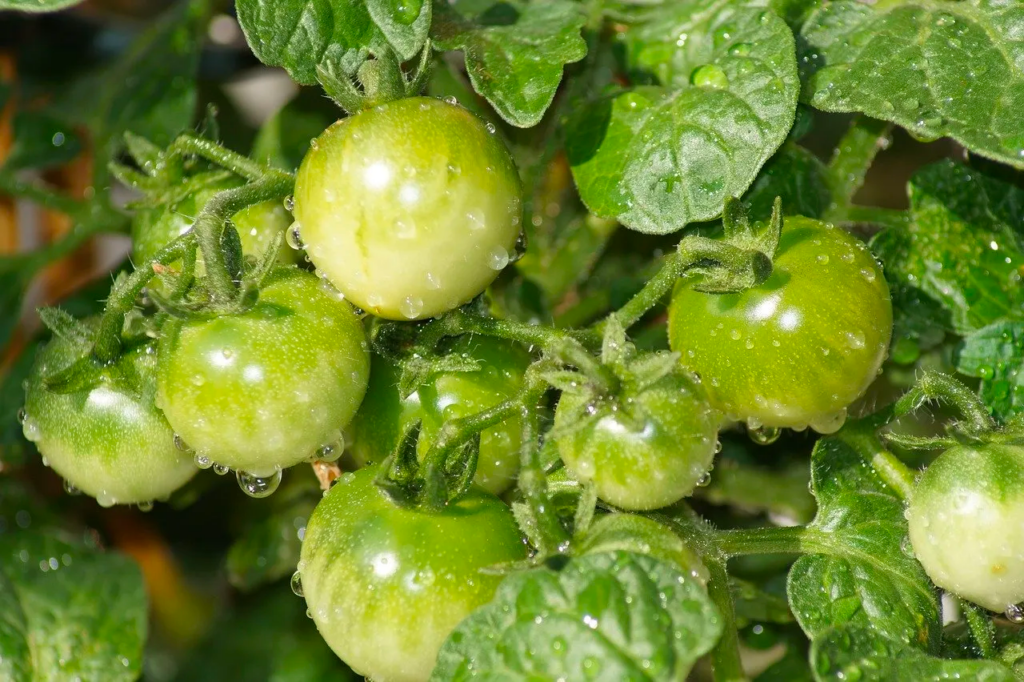
When your cherry tomato plants become wet from rainfall or watering, wait for all of its leaves to dry first before pruning them.
Pruning wet plants can encourage the spread of harmful bacteria or fungal spores that might damage or even kill your cherry tomato plant.
2. Removing more than 25% of the leaves

A rule of thumb in pruning is to remove no more than 25% of its leaves.
Although cherry tomatoes need sunlight to grow and produce fruits, exposing them to the prolonged intense heat of the sun can lead to sunscald tomatoes.
So, as you prune your plant, make sure to leave an even spread of leaves that will give light shade above the growing cherry tomatoes to protect them from the intense sun rays, especially during summer.
3. Not sanitizing your pruning tools

Another common gardening mistake is forgetting to clean your pruning shears before using them. This step is crucial in preventing the spread of disease between your garden plants.
So, make sure to wipe your pruning scissors with rubbing alcohol every after the pruning session. It protects your cherry tomato plants and other plants in your garden from soil-borne and other plant diseases.
4. Not removing the lower leaves

Pruning is mainly focused on removing tomato suckers but don’t forget to prune the old, low-lying leaves on your cherry tomato plant.
They’re often the breeding ground and pathway of harmful bacteria and fungal spores that infect tomato plants. This is most true when these old leaves are left moist and wet, making them habitable to dangerous pathogens.
Once you see old, yellow or otherwise unhealthy leaves, prune them immediately to keep your plant healthy.
5. Letting suckers grow too big before pruning

Leaving tomato suckers to grow on your cherry tomato plant deprives the rest of the main plant of the energy to produce fruit. The plant’s energy is now redirected into developing the new stems and leaves of these tomato suckers.
Additionally, these suckers also weigh the plant down and crowd the plant with too much foliage leaving little to no airflow within the cherry tomato plant.
That’s why it’s best to prune tomato suckers right away to keep them from competing with the energy and allow the plant to focus on fruit production.
What cherry tomato varieties should never be pruned?

Determinate cherry tomato varieties should never be pruned. They grow a certain amount of tomato suckers and produce fruits simultaneously, and pruning them will only hinder their fruit production.
For instance, determinate bush tomatoes should not be pruned because removing their flowers will only produce fewer tomatoes.
Other examples of determinate cherry tomatoes are Rutgers, Roma, Patio Choice Yellow, Tumbling Tom Yellow, and Jersey and Celebrity tomatoes.
Still, you can remove leaves, branches or stems touching the ground to reduce the risk of getting soil-borne pathogens.
FAQS on Cherry Tomato Pruning
Pruning cherry tomato plants, specifically the indeterminate varieties, helps the plant focus its energy on growing ripe and tasty tomatoes. Pruning also prevents the cherry tomato plant from contracting soil-borne tomato plant diseases.
Cherry tomato plants are best pruned during summer because removing the excess leaves and stems will support the plant to focus its energy on fruit production.
Cherry tomato plants should be pruned every 2 to 3 weeks during the growing season to help maintain their shape and support fruit production.
Pruning cherry tomato plants involves removing any dead or yellowing leaves, fruits, stems and branches using a clean pair of pruning shears.
A sanitized pair of shears and garden clippers is the only tool needed to prune cherry tomatoes.
Pruning helps increase the cherry tomato plant’s fruit size, quality and yield. The cherry tomato plant can direct all its energy to fruit production by removing excess foliage and stems.
Pruning helps prevent moist low-lying leaves that become a breeding ground for harmful bacteria and fungal spores that cause tomato plant diseases. By promptly removing the infected leaves, the disease fails to spread to the rest of the plant.
Pruning greatly improves the quality and size of cherry tomatoes by ensuring all the plant’s nutrients and energy are used for fruit production.




